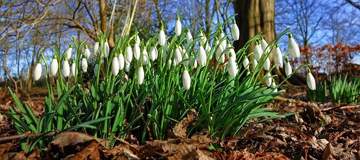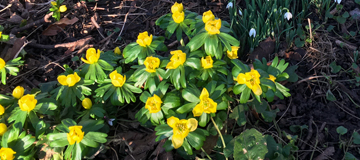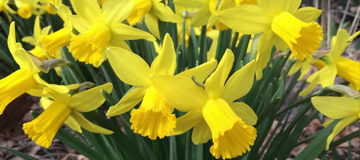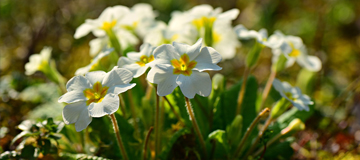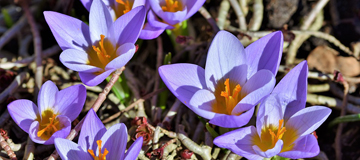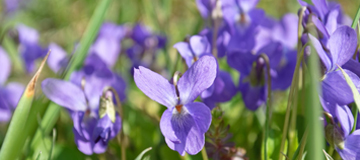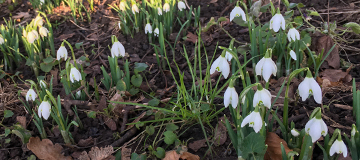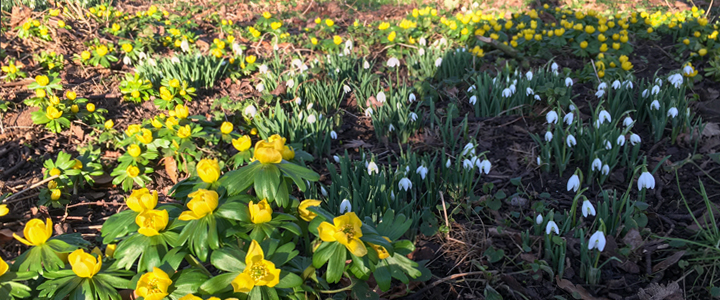
Spring is well and truly on the way, making now the perfect time to get out and about spotting the first blooms of
the year and plan for the season to come.
Overview
Snowdrops, Winter Aconites and non-native Daffodils have
colourful blooms in February as they begin their flowering season in January. These wildflowers can be bought 'in
the green' providing you with near-instant results. This is because they are delivered sprouted and flowered ready
for planting.
Other wildflower species will start making an appearance in February such as Primroses, Sweet Violets, Alexanders and
Colt's Foot.
This is a great month to divide larger perennial wildflowers such as Yarrow, Oxeye Daisy and Greater
Knapweed.
Wildflower Seeds
Wildflower seed mixtures are a cost-effective way of transforming large areas into colourful meadows that support
pollinators, but be aware that wildflower seeds vary significantly in the time they take to establish and
flower.
Sowing Seeds
Wildflower seed mixtures are best sown from late March to late October, but for those eager to begin their wildflower
meadows a late February sowing in mild weather will not cause any issues.
When looking at wildflower seed mixtures, try to consider soil conditions during the flowering period of March to
October to pick the correct mixture for the type of soil and result required, e.g. loam soils, chalk soils, support
bees and more.
Meadow Maintenance
Wildflowers in February
The following wildflower species start flowering in January and have colourful blooms come February creating visually
striking displays.
Snowdrops
Snowdrops start making an appearance in January, but they begin to thrive and dominate their
habitats in February and March. You will find snowdrops in damp soil such as woodlands and hedgebanks all over the
UK.
Winter Aconites
Another species that will be well into flowering is the Winter Aconite. These bright yellow flowers with attractive
green foliage are scattered throughout the country but are mainly in the South Midlands, the Southeast and the East
of England. Winter Aconites flower January to March.
Daffodils
Non-native Daffodils are larger than the native Wild Daffodils with petals and a corona which is a darker yellow
colour. Non-native species begin flowering in January and reach their flowering peak in February and March. These
daffodils naturalise easily creating large stunning yellow displays found throughout the country in woodlands and
wasteland.
Below are wildflowers that make their first appearance in February.
Primroses
Found throughout the UK, the Primrose flowers from February to May and grows in shady areas such as woods, hedgebanks
and besides footpaths. Commonly it has pale yellow petals with a deep yellow centre, but mauve forms can
occasionally be found near habitation.
Spring Crocus
Spring Crocus flowers from February to April and is found throughout the UK with heavy naturalisation in the South of
the county. Naturalised in grassy areas such as parks and churchyards.
Sweet Violets
The Sweet Violet is the only native violet that is fragrant and flowers from late February through
to May. Vastly naturalised throughout England but it's less common in the West and North-West.
Double Snowdrops
Double Snowdrops are less common than Single Snowdrops but occur naturally where there are large colonies of
Snowdrops. They grow in damp soil found in woodlands, hedgebanks, churchyards and by paths. Can be seen in Greater
London, Oxfordshire and Berkshire flowering from February to March.

